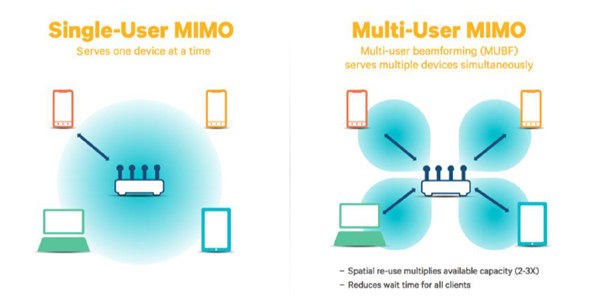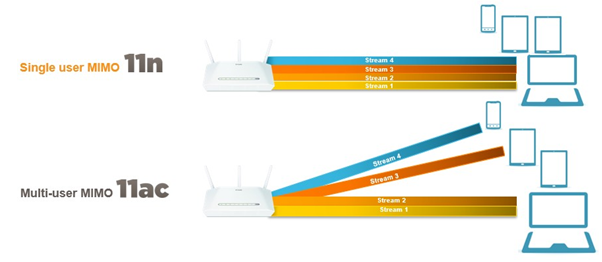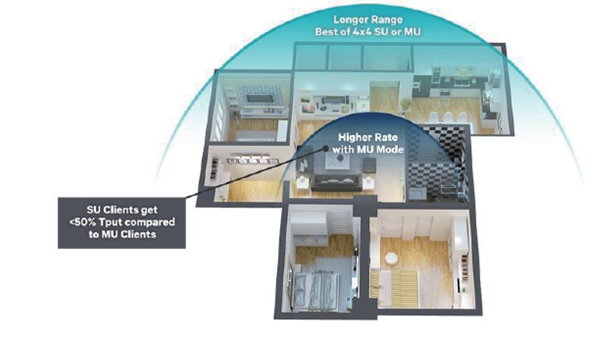How does Jasper's Wi-Fi solve the growing troubles?
Inadvertently, Wi-Fi has been around for 16 years, will it be a bit surprising? But that's the truth. If Wi-Fi is compared to a woman, according to the expression of Chinese culture, she has reached the most beautiful "Jasper Year". At the beginning of Wi-Fi, the network data transmission rate was only 11 Mbps, and now this rate has reached more than 1 Gbps, far beyond the initial rate, and this number is about to be refreshed again. Like all girls, troubles are always accompanied by growth. What are the worries of Wi-Fi? -- Global mobile data traffic grew by 83% in 2013 and is expected to grow nearly 11 times from 2013 to 2018. In addition, compared to cellular data, users prefer to use Wi-Fi to consume streaming music and video, which also allows mobile operators to offload wide area network (WAN) traffic to Wi-Fi. At the same time, in the enterprise, the trend of BYOD makes the enterprise network face the heavy Wi-Fi traffic challenge. Recently, Qualcomm Acer officially released the MU-MIMO white paper "802.11ac MU-MIMO: Bridging Wi-Fi Gap" to explain in detail the actual requirements, technical features and advantages of MU-MIMO technology in Wi-Fi networks. , design considerations and other content. How does MU-MIMO work? Most Wi-Fi routers and APs on the market today use single-user multiple-input multiple-output (SU-MIMO) technology, which uses an inefficient time slot protocol to provide single-time dedicated full-rate Wi-Fi wireless for multiple clients. connection. Typically, an AP has 3-4 antennas, while most clients have only 1-2 antennas. Therefore, when SU-MIMO is used, the client cannot support the full range of MIMO channel operations, and the total capacity of the AP is rarely used, thus causing waste of the AP's limit performance. Multi-user multiple-input multiple-output (MU-MIMO) technology can give APs more choices to serve terminals, making efficient use of the total available capacity, effectively bridging MIMO gaps. Compared with the previous generation wireless network 802.11n, 802.11ac has been greatly improved in transmit beamforming and MU-MIMO functions, making it a breakthrough for wireless local area network (WLAN) users in terms of performance and flexibility. As shown in FIG. 1, when SU-MIMO is adopted, the device transmits and transmits multiple spatial streams to only one terminal at a time; and MU-MIMO allows multiple spatial streams to be simultaneously allocated to different clients, increasing the total throughput of the WLAN system. Volume and total capacity. Figure 1. Comparison of SU-MIMO and MU-MIMO MU-MIMO utilizes transmit beamforming to establish up to four directional radio frequency (RF) links. When MU-MIMO is working, the AP uses enhanced beamforming technology to transmit to the target terminal with maximum energy; at the same time, it adjusts the transmission in the non-target terminal direction by zeroing. This is the SpaTIal Reuse technology, which provides a dedicated full bandwidth channel for each of the four users. Figure 2. SU-MIMO and MU-MIMO operation modes In the example shown in Figure 2, an 802.11ac MU-MIMO AP with four antennas can simultaneously send a spatial stream to a laptop, a cell phone, and two tablets. Since the MU-MIMO network does not require its client device to make time-sharing connections with other client terminals on the network, the waiting time of each terminal is reduced, thereby greatly improving the response speed of the network and the client terminal. MU-MIMO brings many other benefits to end users. First of all, the effective increase of the total capacity of the network can be increased by 2-3 times, so as to achieve efficient use of the available spectrum. This has significant advantages for downtown areas, apartment buildings, corporate networks, hotspots or other crowded environments. Furthermore, the capacity increase brought by MU-MIMO allows the system to support higher traffic and bridge MIMO gaps, enabling Wi-Fi networks to meet the increased data demands of HD video streaming, audio and other data-intensive applications. . In addition, as MU clients increase efficiency by 2-3 times, there will be more idle time or capacity on the network to serve other clients, which means that traditional clients will also benefit from MU-MIMO. How to design a MU-MIMO solution? According to the white paper, MU-MIMO design choices and trade-offs focus on the number of spatial streams and the number of concurrent users. From the perspective of the number of spatial streams, 802.11ac increases the maximum number of SAT receive MIMO streams to eight, effectively doubling network throughput compared to the 802.11n standard. In terms of the number of concurrent users, Qualcomm has achieved the best performance and stability of 4x4 system MU-MIMO for three concurrent users after seven years of research. Therefore, designing a practical chip solution for MU-MIMO applications requires rigorous measurement and selection. For example, when preparing for probing, it is necessary to consider how to select from a plurality of candidate terminals and how to select the data transmission rate of the MU. Qualcomm has developed a unique set of algorithms for scheduling, probing, packet and rate control. Figure 3. MU-MIMO dynamics, optimized throughput, coverage and distance Specifically, during scheduling, Qualcomm Atheros adopts an algorithm that can schedule transmissions based on client traffic distribution, quality of service (QoS) requirements, and client time fairness to maximize network capacity; According to the traffic type of each MU client, three clients are reasonably selected from the candidate MU clients to ensure that the total network throughput is maintained at a high level; the Qualcomm Acer algorithm also ensures the detection frequency and rate selection between Balance to ensure that the total network throughput is maintained at a high level. More powerful connection, smarter home 802.11ac MU-MIMO brings an end-to-end ecosystem that supports MU-MIMO technology for network capacity and client enhancements, and chip solutions and related reference designs help OEMs easily produce MU-MIMO-enabled products. As a product of Qualcomm Atheros, VIVETM 802.11ac technology supporting Qualcomm MU I EFX can provide OEMs with a complete 802.11ac solution covering routers and gateways, enterprise APs, mobile devices and computer equipment and consumer electronics products. . In addition to MU-MIMO technology, another important technology to improve network capacity is 802.11ad technology, which utilizes 7Ghz-9Ghz unlicensed Wi-Fi spectrum in the 60GHz band to deliver transmission speeds of up to 7Gbps. Qualcomm Atheros has demonstrated the world's first three-band wireless solution for home networking products and media center solutions at CES2015. This new reference design supports 802.11ad and 802.11ac Wi-Fi, which will be residential Gateways, set-top boxes, and media servers provide high-speed, high-capacity wireless networks that span the entire home, while being protected from nearby access points. On the other hand, the development of wireless technology makes smart home no longer a simple broadband connection, and intelligent gateway is gradually becoming the core of smart home. As an open application platform, it will not only facilitate the development of new network applications and services, but also connect to other parts of the Internet of Things (IoE), such as connecting a gateway when a car enters a garage, or connecting to a city grid through a smart meter in the home. . Qualcomm's Internet Processor (IPQ) transforms gateways, routers, and media servers into smart home platforms, making connected homes smarter, more user-friendly, and more secure. In addition, Qualcomm offers a variety of connectivity technologies for smart homes. In addition to supporting Qualcomm® MU | EFX's VIVETM 802.11ac and tri-band solutions, it also offers low-power Wi-Fi and Bluetooth connectivity for home appliances, lighting, Home automation systems and sensors as well as Gigabit HomePlugAV power lines and Hy-Fi. For more on the white paper, see "802.11ac MU-MIMO: Bridging the gaps in Wi-Fi" Disposable Cleanroom Swab,Lint Free Cleanroom Swab,Cleanroom Polyester Head Swab ,Polyester Tip Cleanroom Swab Miraclean Technology Co., Ltd. , https://www.mrccleanroom.com

